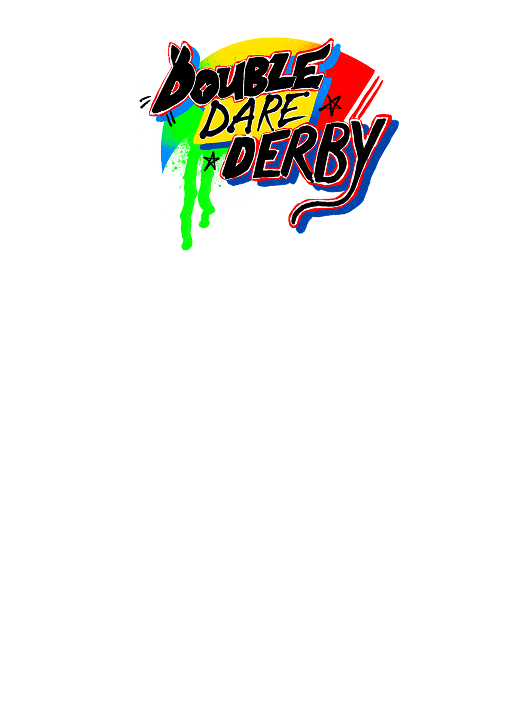Week 2: Rewriting the Rules of the Race
Hello again, readers! It's been a week since our last devlog and a lot has changed; so let's go over how the project has evolved.
Game Pitch Presentation for Industry Guests 💻
On Wednesday, May 21st, 2025, our team had the pleasure of pitching our game to a few industry guests. The presentation included:
- Explaining the mechanics
- Showing the screen layout
- Describing the core player experience and fun elements
- Describing what makes our game unique
- Showing a demo of what we made in a short game jam
After our 5-minute presentation, the guests and our fellow peers offered their feedback. Before we talk about about that feedback, here are some of our takeaways from the presentation itself:
Spend more time talking about your mechanics and how they work
When you're pitching a game, explaining how stuff works is more important than the art and music direction, for example. As such, you should spend more time going over how the game plays rather than giving that time to what the game looks and sounds like. This will give more information about the play experience to the audience you're pitching to.
Clarify when something that you show isn't representative of the final game
Using temporary assets is a great way to jumpstart your development. As someone working on the game, you know what will be changed in the future — your audience does not. To them, seeing is believing. No matter how experienced you are in creating video games, your brain can't help but jumping to conclusions based on what's shown to you. Therefore, acknowledge your temporary assets (especially ones that may be contradicting what you're pitching) so you can be on the same page as your audience.
Organizing Feedback 📑
Our team met up the day after the presentation to sort the feedback that we received from our professors, peers, and industry guests. We organized this feedback into different groups.
Camera
Many of our peers mentioned how the movement of the camera made them nauseous. One of our first priorities is to convert to Cinemachine and have the camera’s rotation be semi-independent from the player’s rotation. The camera will only rotate on the Y-axis. In the future, clipping and fade should be added to ensure that objects don’t get too close to the camera and block its view.
Dual Monitors & Playtesting
While developing Double Dare Derby, our professors and industry guests suggested having a “home version” of the game that is played on one monitor. Since not all team members have the required amount of controllers or readily available testers, internally testing the game with 4 players will likely fall under the responsibility of team members who have the ability to do so.
Level Design
Due to not clarifying that the skatepark in our demo was not representative of the final game, the industry guests were confused about what the track will look like. The team initially agreed on a linear and looping track set in a connection of alleyways to fit with Double Dare Derby’s theme.
Player Roles
During the feedback session, industry guests were confused about the strategy for blockers and suggested that having different player roles may be scoping too far. As such, we decided to remove player roles and give all players the same abilities. Jamming and blocking may occur as emergent strategies as all players are able to hit, block, whip, and score points.
Win Condition
The win condition for Double Dare Derby was debated and, as of May 22nd, had not been confirmed. Below were the options discussed:
- Teams earn a point by one of their teammates completing a lap. The team that has the most points when the time runs out wins.
- This option was the team’s original plan before the feedback session.
- Players can earn points from completing a lap (e.g. 1,000) and can earn more points for each lap if they complete it fast (e.g. 1,500). Players have the ability to perform tricks, which gives an amount of points modified by a multiplier based on the number of laps the player completed. The team that has the most points when the time runs out wins.
- This option was inspired by Hi-Fi Rush’s scoring system.
- A goal similar to King of the Hill where each team’s goal is to hold an object for the longest amount of time possible. By making contact with the player holding the object, another player can steal it. When time runs out, the team with the most time holding the object wins.
- This option was inspired by Mario Kart Deluxe’s Shine Thief game mode.
Next Steps 🐾
Week 2 Progress (5/21 - 5/28)
✔️Shifted Gameplay Focus
✔️️Refined Camera System
✔️️Updated Character Movement
Get Double Dare Derby
Double Dare Derby
Extreme roller skating tag for 2-4 players
| Status | In development |
| Authors | Roller Derby Studios, ppend, alexlewis9, mariimao, yyutiw, scaredyrat, junbtww, Griffin, Albeanoo, Justin Bates |
| Genre | Action |
| Tags | 3D, Indie, Multiplayer, Short, Unity |
| Languages | English |
More posts
- Week 11: And the Results Are...Aug 07, 2025
- Week 10: Reducing FrictionJul 24, 2025
- Week 9: What Would You Risk for 300 Points?Jul 17, 2025
- Week 8: Bug Fixes, Boosts, and BlingJul 10, 2025
- Week 7: Preparing for PlayersJul 02, 2025
- Week 6: Ready, Set, Ramp Up!Jun 25, 2025
- Week 5: Sharing the FunJun 23, 2025
- Week 4: Diving Into ChaosJun 11, 2025
- Week 3: Fighting for the Tin CrownJun 05, 2025

Leave a comment
Log in with itch.io to leave a comment.